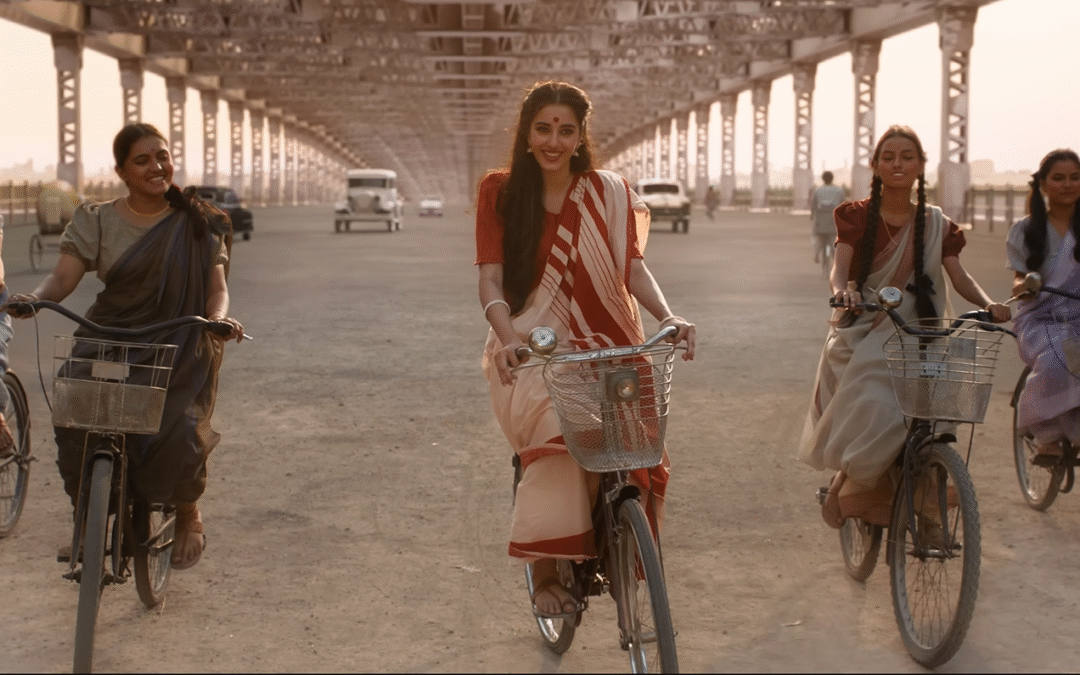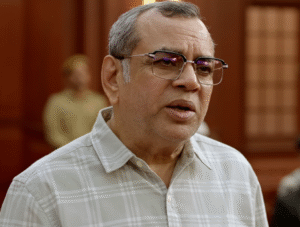Introduction:
The trailer for The Bengal Files immediately captivates with its intense portrayal of Bengal’s turbulent past and present, stirring strong emotions among audiences.
Even though the movie runs a little long, viewers have been enthralled by every moment, praising the film’s gritty storytelling and powerful performances.
The trailer sets high expectations for a gripping and meaningful cinematic experience.
Release Details
The film was released theatrically in India on September 4, 2025. It is directed by Vivek Agnihotri and carries a bold political and historical narrative, continuing the filmmaker’s tradition of daring cinema.
The movie is available in Hindi and several regional languages, addressing a wide audience.
Cast
Pallavi Joshi as Maa Bharti, a pivotal and haunting character
Simran Kaur
Darshan Kumar
Sharath Saxena
Mithun Chakraborty in a significant role
Vivek Agnihotri (Director)
Namashi Chakraborty as Shiva Pandit, the fiery investigator investigating political crimes
Among others, the ensemble cast delivers strong performances that anchor the film’s heavy themes.

What is in the Movie
The plot centers around Shiva Aloke Pandit, a dedicated CBI officer, who is dispatched to investigate the mysterious disappearance of a young Dalit journalist named Gita Mandal in modern-day West Bengal.
His investigation opens a window into the dark communal violence surrounding the infamous Direct Action Day of August 16, 1946, also known as the Great Calcutta Killings, and the subsequent Noakhali riots—events depicted as brutal genocides that have long been ignored or suppressed in popular history.
Parallel to Shiva’s investigative efforts, the film delves into the life of Maa Bharati, an elderly woman with dementia who is haunted by survivor’s guilt and memories of horrific communal violence she witnessed during her youth.
Through her fragmented recollections, the audience witnesses the grim realities of partition-era Bengal, exploring the devastating human cost of political upheaval and forced migrations.
The film’s intense flashbacks juxtapose historical atrocities—burning homes, massacres, and betrayals against the rich cultural landscape of pre-Partition Bengal.
What Works
Direction & Storytelling: Vivek Agnihotri’s direction is fearless and focused, presenting a sensitive yet brutally honest picture of Bengal’s past and contemporary crises.
Performance: The cast, especially Pallavi Joshi and Namashi Chakraborty, bring tremendous depth and intensity, vividly portraying their characters’ pain and determination.
Cinematography: Visually striking scenes capture both the haunting beauty and grim reality of Bengal—from riverside towns to riot-torn streets.
Emotional Impact: The narrative stays with you long after viewing, stirring empathy and reflection on difficult histories.
What Doesn’t Work
Length: At over three hours, the film is lengthy, with some viewers feeling certain portions were drawn out, affecting the pacing and engagement.
Complex Narrative: The dense historical references and complex political layers may challenge casual viewers unfamiliar with Bengal’s history.
Polarizing Content: The bold, unapologetic depiction of sensitive subjects has sparked polarized opinions, with some calling it propagandist, while many hail it as a needed truth-telling.

Final Thoughts
The Bengal Files is a courageous and soul-stirring film that does not shy away from exposing uncomfortable but vital truths.
The strong direction and committed performances make it a powerful cinematic mirror reflecting a troubled region’s past and present.
Though the runtime is on the longer side, audiences have embraced the film’s intensity and depth, acknowledging its importance despite the extended length.
It is a must-watch for those who seek cinema with social relevance and emotional resonance.
For all its weight and intensity, The Bengal Files holds up a mirror that demands to be seen, felt, and remembered.
In essence, The Bengal Files is not just a crime thriller but a sweeping historical and political commentary that seeks to shed light on the painful legacy of Bengal’s past and its reverberations in contemporary times, making it a challenging yet significant watch.
This narrative depth, accompanied by intense performances and evocative visuals, anchors the film firmly in the genre of emotionally charged political drama.




